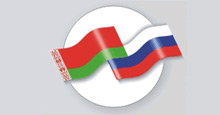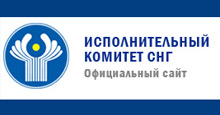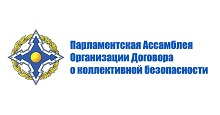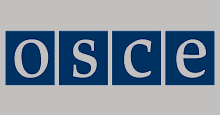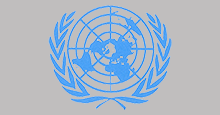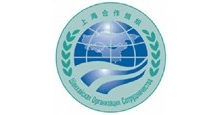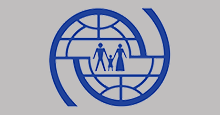On July 4, 2025, a delegation of the CSTO Secretariat visited the Central Military-Patriotic Park of Culture and Recreation of the Armed Forces of the Russian Federation "Patriot".
The Kyrgyz President Sadyr Japarov received the Ministers of Foreign Affairs of the CSTO member states and the Secretary General of the Organization in Cholpon-Ata on June 30. The meeting was attended by the Foreign Ministers of Kyrgyzstan, Belarus, Kazakhstan, Russia and Tajikistan.
On June 30, 2025, a regular meeting of the CSTO Council of Foreign Ministers was held in Cholpon-Ata (the Kyrgyz Republic) under the chairmanship of the Kyrgyz side, which was attended by the Organization's Secretary General Imangali Tasmagambetov.
Safar Umarzoda, Head of the Department for Countering Challenges and Threats of the CSTO Secretariat, took part in a special event (side-event) on "Countering Radicalization leading to terrorism and Extremism" organized by the Russian Federation on the margins of the OSCE Annual Conference on Security Review, where he reported on the measures taken by the CSTO on countering terrorism and extremism, and willingness to share the experience gained.
Every fifth resident of the Republic of Armenia went to the front ...
25.04.2020“In the victory over fascism Armenians,
from the private soldier to the marshal,
Immortalized their names by the unfading glory of courageous warriors. "
Marshal of the Soviet Union Georgy Zhukov.
For the Republic of Armenia, as well as for the entire Soviet people, the war began unexpectedly. Just two decades have passed after all the challenges that fell to the lot of the Republic of Armenia at the beginning of the 20th century. The country was just beginning to recover. Industry and agriculture started developing. Like never before the Republic of Armenia needed the peace and normalcy. However, the enemy invaded the homeland and yester peasants, engineers, students and workers in step with each other enrolled at the Red Army.
In the Soviet Republic of Armenia, general mobilization was met with unprecedented enthusiasm. The atmosphere of patriotism and the desire to defend the homeland reigned everywhere. Almost every fifth resident of the Republic of Armenia went to the front. Totally, upon the war, more than 300 thousand natives of the Armenian SSR were mobilized into the Soviet army, another 200 thousand ethnic Armenians were called up to the front from other Soviet republics. The Armenians - the Red Army and Red Navy men - fought in the navy and ground troops, in mechanized and infantry divisions, aircraft and cavalry. More than 100 thousand Armenians were drafted into the armed forces of the countries of the anti-Hitler coalition, most of all into the French army and the US army, almost 20 thousand Armenian soldiers. More than 200 thousand Armenians did not return from the war, which is equal to 1/7 of the population of the Republic of Armenia.
Six Armenian national divisions took part in the Great Patriotic War. Five of the divisions were formed after the start of the War. The 76th Rifle Division (the 51st Guards "Vitebsk" Order of Lenin the Red Banner division named after K. E. Voroshilov) was formed in May 1922. in Yerevan. Marshals I. Baghramyan and A. Babajanyan served in the ranks of the division. At the beginning of the War, the Division carried out special missions on the territory of Iran, then followed the battle route from Stalingrad to the Baltic states and the Republic of Belarus, liberating about a thousand settlements.
The distingushed 89th Rifle Taman Red Banner Order of the Red Star Division was formed in Yerevan in December 1941. The division began its martial path from the foothills of the Caucasus and participated in the liberation of Sevastopol, Balaklava, Kerch. For the heroism shown on the Taman Peninsula, the division was given the honorary name "Taman". Upon the War, the Tamanians liberated more than 900 settlements. Under the command of Major General Nver Safaryan, the 89th division was among the first to cross the border of the USSR, passed through all of Poland and in the spring of 1945 entered the capital of the Third Reich. For defeating the German garrison in Berlin, the division was awarded the Order of Kutuzov of the second degree. A monument to the Tamanians was erected in Balaklava, where the mass grave of soldiers of the 89th division is located at the expense of the Autonomous Soviet Socialist Republic.
The Armenian 390th Rifle Division, created in September 1941, also participated in the battles for Kerch. Fighters of the division showed courage and striking power in the Crimea.
The 408th Rifle Division was formed in August 1941. Fighters of the division fought at Novorossiysk and Tuapse. In October 1942, being surrounded, the division was able to withstand numerous enemy forces and break through the encirclement. The division met the Great Victory on the Elbe River.
The 409th Rifle "Kirovograd-Bratislavian" Red Banner Order of Bogdan Khmelnitsky 2nd degree division, was formed in August 1941. Until December 1942, it defended the state border from a possible invasion from Turkey. Then it participated in battles in the Chechen-Ingush Autonomous Soviet Socialist Republic, Stavropol and Krasnodar. The division participated in the battles for the liberation of Hungary, distinguished itself in the battles for the liberation of Bratislava. At the end of the war, division fighters paraded into Vienna.
The 261st Rifle Division was formed in the autumn of 1942. It was assigned to defend the Soviet-Turkish state border.
In addition to national military units, eight divisions were created or replenished in the Republic of Armenia. In addition, upon the World War II, over 85 thousand recruits were trained in the Republic of Armenia. Since the Republic of Armenia was equated with the front-line zone and a significant part of the state border passed through its territory, special attention was paid to preparing personnel for containing attempts to break through the enemy.
Fighting valiantly with the fascist invaders, the Armenian soldiers participated in all major battles and military operations of the Great Patriotic War. Many thousands of Armenian soldiers fought during the defense of Moscow, and the future Marshal of the Soviet Union Hovhannes (Ivan) Baghramyan commanded the staff of the front operational battle group of the right wing of the southwestern front. 30 thousand Armenians participated in the Battle of Stalingrad, a third of them were deceased. 10 thousand Armenian soldiers took part in the battle on the Kursk Bulge. Near Kursk, the military talent of Baghramyan and future air marshal Sergei Khudyakov (Armenak Khamferyants) also was demonstrated. More than 100 thousand Armenians fought in the Caucasus and the battles for the liberation of Kerch and Crimea. 80 thousand Armenians liberated Ukraine, 50 thousand fought in the Republic of Belarus, 45 thousand Armenians died in these battles.
The Soviet divisions formed in the Armenian SSR and the Armenian fighters as part of the Soviet troops entered Europe by victorious march, freeing countries and peoples from the fascist oppression. Many have ended their glorious journey in Warsaw, Prague and Vienna. The capture of Berlin, the fighters of the celebrated Taman Division marked by the performance of the “Kochari” folk dance under the walls of the defeated Reichstag.
Upon the war, the Armenian people gave the Soviet Union five Marshals of the Great Victory: Ivan (Hovhannes) Baghramyan - Marshal of the Soviet Union, Ivan Isaakov (Hovhannes Isaakyan) - Admiral of the Fleet of the Soviet Union, Amazasp Babajanyan - Chief Marshal of Armored Forces, Sergey Khudyakov (Armenak Khamferyants) –Marshal of the Air Force, Sergey Aganov - Marshal of Engineering Troops. Marshal Baghramyan commanded the First Baltic, and subsequently, the Third Byelorussian Front. More than 60 Armenian generals carried out command on all fronts of the war, among them there are three army commanders and three corps commanders. At the end of the War, 83 officers received general ranks.
For participation in the war, over 66 thousand Armenians were singled out for various state rewards. The titles of Hero of the Soviet Union were awarded 107 soldiers and officers. Ivan Baghramyan and Nelson Stepanyan became the Twice Heroes of the Soviet Union. 27 Armenians became full holders of the Order of Glory. In terms of the number of heroes of the USSR during the war years, Armenia ranks 6th.
The Armenians proved themselves not only as commanders and fighters of regular units, but their contribution to the ranks of partisans and resistance forces in the Soviet Union and European countries was great. In France, the partisan regiment of Alexander Ghazaryan totaled 1,200 Armenians, and the member of the French resistance Misak Manushyan became the national hero of France.
The Armenian military intelligence representatives made a special contribution to the Great Victory. The group of Gevorg Vartanyan accomplished a historical feat. The group revealed the plan of the Nazis to liquidate the heads of state of the participants of the Tehran Conference in April 1943. The operations were managed by a resident of Soviet intelligence in Tehran, Ivan Agayants.
We cannot ignore the selfless work of those who supplied the front with ammunition and food. Armenian factories produced strategically important products for the front: rubber, copper, carbide, aluminum and much more. The Republic organized the production of military equipment, ammunition, explosives, and communications equipment. Upon the war, about 30 factories, 110 workshops and manufactories were commissioned in the Republic of Armenia. The Republic produced more than 300 types of products needed for the front.
The salvation of cultural heritage from plunder, desecration and destruction has become the mission of many artists and scientists. In Leningrad, the director of the State Hermitage, orientalist academician Joseph Orbeli, organized the evacuation of the pieces of art to the home front, and did it in a matter of days. He saved invaluable masterpieces of fine art and historical monuments. The testimonies of I. Orbeli at the Nuremberg Trials became the evidence of the deliberate valuable cultural artefacts destruction by the fascists.
On May 9, 1945, the sky above the central Lenin Square in Yerevan was lit with a festive salute in honor of the Great Victory. The Armenian people shared the joy of the Great Victory over fascism.
Commemorating and honoring heroes-liberators is an important component of our common victory. Today, almost six hundred monuments to the participants of the Great Patriotic War are under state protection in the Republic of Armenia. The people of the Republic of Armenia remember and honor all their heroes. Imperishable memory and glory to them.
May the memory of the heroes live forever.

